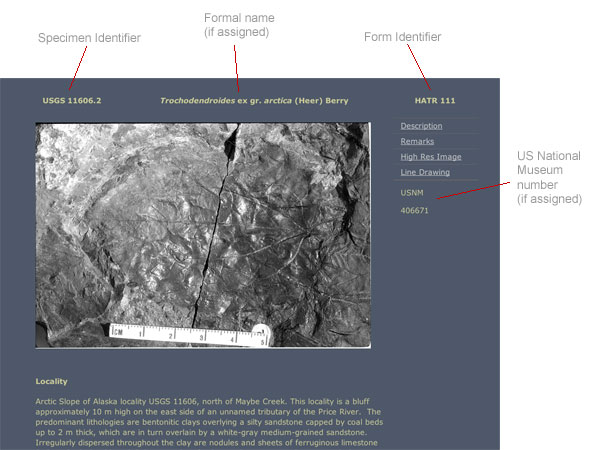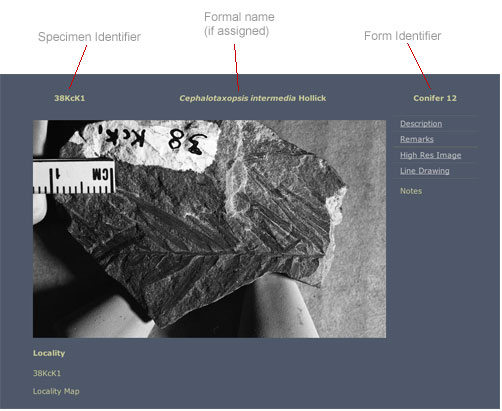Systematics
Specimen IdentifiersUSGS specimens were assigned identifiers consisting of the locality number followed by a period (.) followed by a specimen number. After critical comparison of venation and margin features, specimens were grouped into forms which shared a more or less coherent set of consistent characters. These characters are summarized in the form descriptions. Where these forms bear a close similarity to published 'species' the published names are referred to, but in all cases the forms are identified by their unique number. Generic names of extant (living) plants are now considered inappropriate for fossil remains where diagnostic parts such as flowers or seeds are missing. However in the past this was not the case. Where the name of a living genus has been given to a fossil specimen the genus name sometimes is enclosed in single quote marks.
Smiley informally allocated numbers to each of his forms. Very occasionally, however, he used generic names but again on an informal basis. Smiley's original form identifiers (e.g. 'Conites 4') are given in in addition to our identification where we have compared his material with published forms or specimens collected by us. Smiley's specimen identifiers are constructed from the locality (florule) numbers.
Collections made by R.A. Spicer are allocated identifiers begining with two number representing year of collection (e.g. 1985 is shortened to "85"). The letters "RAS" then follow after which is a locality number. After the locality a number a period (.) separates the locality number from the specimen number. An example is "85RAS12.1" which means that the specimen was collected in 1985 by RAS from locality 12 and is specimen number 1. A single rock can have more than one leaf specimen on it. If the rock was split revealing both part and counterpart of a leaf then the part and counterpart are identified by the letters 'a' and 'b'.
Russian specimens are preceeded by and letter code identifer denoting the museum collection they were in when they were photographed. This is usually followed by a collection-specific locality code or number followed by a period (.) followed by a number relating to a given rock sample. Multiple specimens on a single rock may be given individual specimen numbers or letter codes (a,b, c etc.). Where present, part and counterpart are also given separate letter codes.
|




